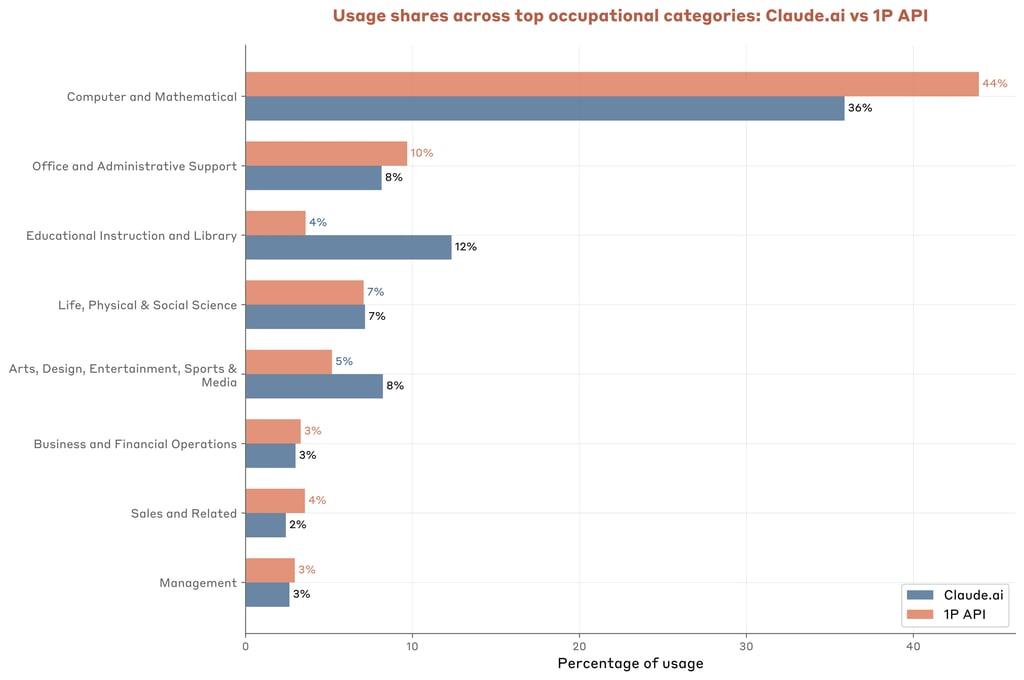Anthropic has released its third Economic Index, a wide-ranging study of Claude AI usage across countries, US states, and enterprises. The September 2025 report shows coding still accounts for the largest share of activity worldwide, yet education and science are becoming more prominent.
The study also found that automation is increasingly common, with more users trusting Claude to complete entire tasks. Anthropic said the trend offers an early look at how AI is reshaping work and may determine which workers and regions gain the most from the technology.
From debugging code to classroom teaching
Software development remains Claude’s most common use case, making up more than a third of activity globally. But the kind of coding has shifted. New code creation doubled over the past eight months, while debugging declined, suggesting users rely on Claude for more advanced outputs in a single attempt.
Claude AI usage for education and science purposes also expanded. The share of educational tasks rose from about 9% at the start of 2025 to more than 12% by August. Scientific tasks climbed from 6% to over 7%. In contrast, business and financial operations fell from 6% to 3%, and management dropped from 5% to 3%.
Automation vs augmentation in AI tasks
Anthropic tracked not only what tasks Claude handled but also how people worked with the model. Conversations where users gave Claude a job and let it run with minimal input jumped from 27% in late 2024 to 39% in August 2025. For the first time, automation outweighed collaboration overall, making the balance of automation vs augmentation in AI tasks a central trend.
The AI company said two forces may explain the shift: improvements in Claude’s ability to deliver accurate results on the first try, and rising user confidence. That combination has made it more common for people to delegate complex tasks to the AI tool fully, rather than iterating step by step.
Global and enterprise patterns
The US accounted for 21.6% of global usage, far ahead of India, Brazil, Japan, and South Korea. Adjusted for population, smaller high-income countries led per capita. Israel, Singapore, Australia, New Zealand, and South Korea all used Claude far more than expected based on their working-age population.
Within the US, Washington, DC showed the highest per-capita usage, followed by Utah, California, New York, and Virginia. Anthropic said local economies shaped how people used the model, with IT-related requests most common in California and tourism tasks overrepresented in Hawaii.
Enterprise adoption leaned more heavily on automation than consumer use. About 44% of API traffic involved coding, compared with 36% on Claude.ai. Administrative tasks were also frequent, while education and creative work were far less common. Nearly eight in 10 business interactions were automated, showing companies are embedding Claude directly into workflows.
Anthropic said it will continue updating its Economic Index and releasing data to help researchers and policymakers prepare for AI’s economic effects. The findings point to an uneven but accelerating shift: coding still leads, but education, science, and automation are taking a growing share of AI’s early role in the economy.
Read about Anthropic’s recent decision to give Claude power to end harmful conversations and protect “model welfare.”
The post Anthropic’s AI Usage Study: Coding Still Dominates, Education and Science Increases appeared first on eWEEK.

No Responses